Home 10KW Solar System Output per Day
10KW Solar System Output Per Day
The amount of energy produced each day by a 10kW solar setup mainly varies depending on how much sunlight your area typically gets.
A 10kW solar system typically produces 40 – 55kWh of energy per day. Other factors that affect energy output are positioning sunlight and inverter type.
Let’s examine the number of panels you need for a 10kW system and what it can run. We also look at maximizing the output.
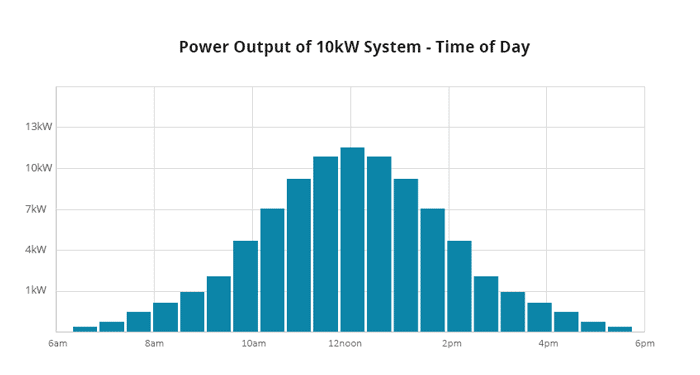
Table of Contents
Toggle10kW output by city
Some cities get a lot more sun than others which means a 10kW solar system will generate more power on average throughout the year.
Below is the output of major cities in Australia.

Number of panels in a 10kW solar power system
The number of panels you will need to make up a 10kW system will depend on the output of the individual panel. Panels come in 250 watts right up to 420 watts.
So to reach a maximum output of 10,000 Watts (10kW) you would need 40 x 250W panels. A typical run-of-the-mill panel will produce about 375W. You will need 27 x 375W panels to get you to 10kW.
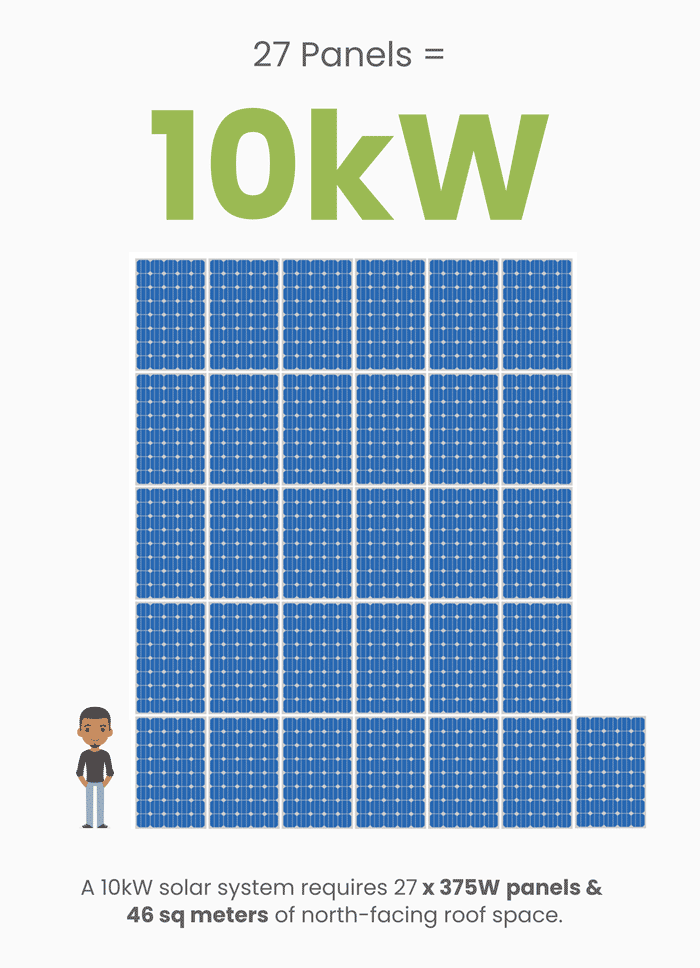
Factors that affect a solar system’s energy output
Knowing how much energy to expect from a 10kW solar system is one thing. But determining the factors that affect its output is entirely different. You may not be able to tell the exact power output until you consider the following factors.
Panel type
Monocrystalline panels produce the highest efficiency at 25.6% efficiency. That means these panels can convert more than a quarter of the generated energy into electricity.
Polycrystalline panels are also efficient, with the capacity to convert 20% of the generated energy into electricity. They may not be as productive as their monocrystalline counterparts, but they still deliver enough power, especially for larger systems.
Thin-film panels are the least productive, at just 11% efficiency. Their low capacity to produce makes them the most affordable option. It may also mean you need more panels to produce more energy.
Sunlight hours
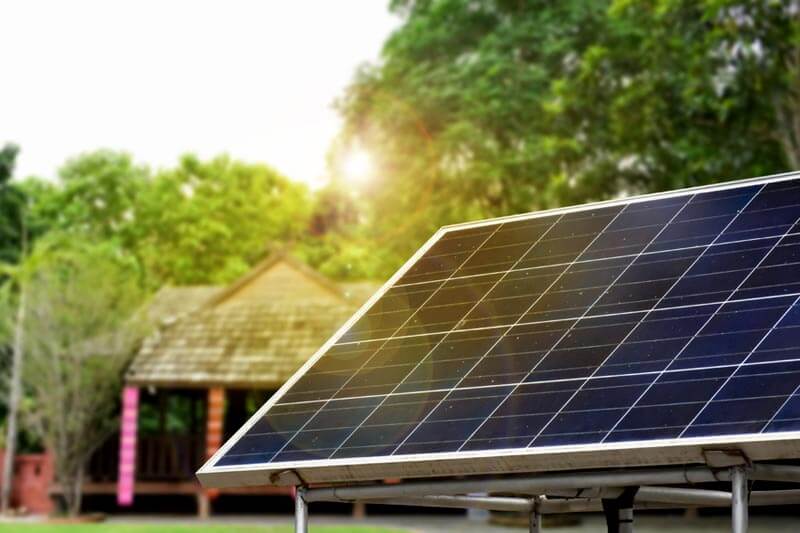
The amount of sunlight reaching the panels is one of the most vital factors. If you can install the panels in an area free of shade, the solar power system will optimally perform. That means one location may favor the system better than another.
Living in an area with trees, hills, or tall buildings may affect the panels, and there is not much you can do in such a situation short of moving or cutting trees where they apply. Panels work best when fully exposed to sunlight, especially at peak hours. However, you may still get the best out of them if you use microinverters instead of power or string inverters.
Temperature
Having lots of sunlight does not always equate to having enough heat to generate electricity. The hotter the weather, the better the panels perform. Queensland, for example, has hot weather for most of the year. So, a 10kW solar system may have better output in such a location due to the temperature.
Positioning angle
Apart from having enough peak sunlight per day, how you position the panels is also crucial. You may have long hours of hot sunlight, but if the system does not face the correct direction. Your location determines whether the panels face east, south, west, or north for the best results. Additionally, the positioning can better expose them to sunlight or create a shade over them.
Maintenance
Solar power systems typically do not need a lot of attention once installed. However, it is best to check them from time to time and clean them if necessary. As with everything else, dirt and debris can affect the output, even if it is a high-powered system like a 10kW one. Therefore, consider checking and cleaning the panels monthly to keep up the system’s performance.
Inverter
Inverters are an essential part of the solar power system. They are responsible for converting direct current (DC) to alternating current (AC); every house uses AC, not DC. If you choose the wrong type of inverter or an inferior one due to cost, the system may become compromised in energy output.
In other words, your inverter can make or mar the solar system’s production. String inverters are popular, but microinverters may work better if the panels have a low output.
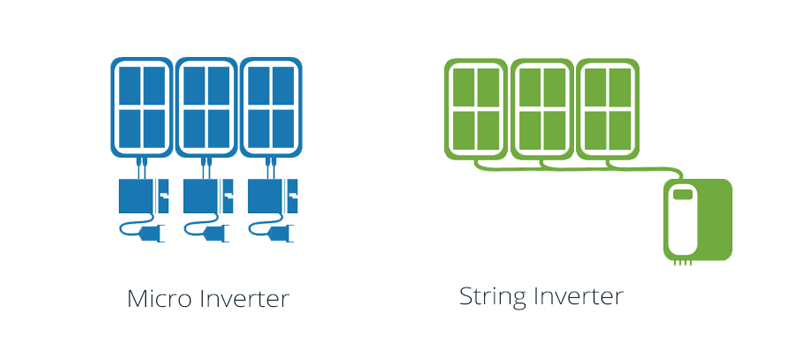
Life expectancy
A solar panel can last between 20 and 25 years. Also, note that from the time you start using it, the panel’s efficiency begins diminishing. Therefore, the longer you use the solar power system, the less efficient it becomes. The output you get in the first year of use may not be the same in the seventh year.
Shading
Shading is a real issue for solar panels. If you get partial shade on just one panel, it can know out the whole system. Solar panels are linked together in a circuit with a central inverter, so minimizing shading will increase output. Even one lead can cause your system to fail.
Microinverters can solve this issue. Instead of a central inverter, microinverters are placed on the back of each panel which means If one panel is shaded, the rest of the system keeps working.
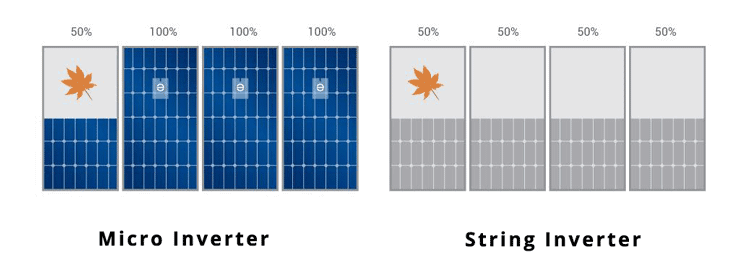
Cost to install a 10kW solar system
The cost to install a 10kW solar system will vary depending on the quality of the product used, the costs of the installer, and the government solar rebate for your state.
On average, you can expect to pay $9,623 installed. If you have received a quote much higher than that, I suggest getting a price from another company.
This price includes all solar panels, a central inverter (microinverters will cost more), and the cost to install and connect to the grid.
What can a 10kW solar system run?
A 10kW solar system output per day can be high enough to power five energy-saver refrigerators or two high-powered air conditioners. It is enough to run a house with moderate electricity usage, even if it solely depends on the solar power system.
Before using a large solar system, consult a professional, bearing your house’s energy consumption rate in mind. Also, remember the roof or ground space needed to install the panels for the system, which may require up to 25 panels.
Table of Contents
Toggle




